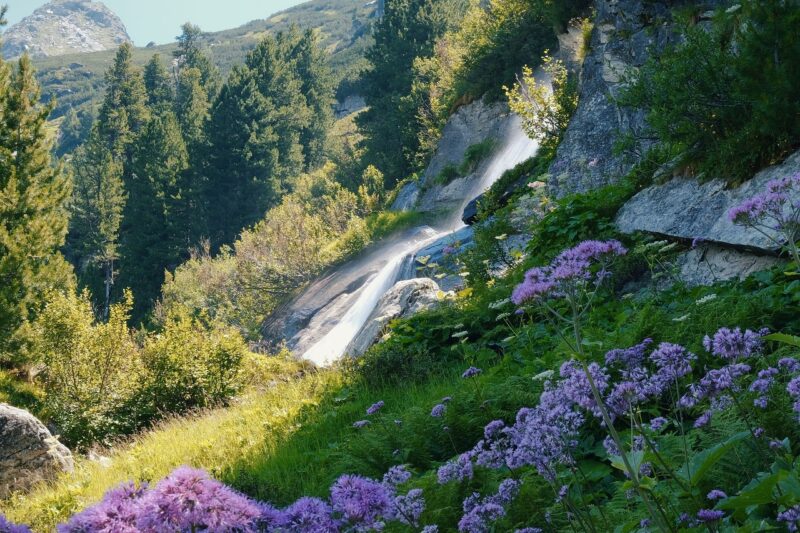How Waterfalls Formed Over Time and What They Reveal About Our Planet’s History
November 14, 2024

Waterfalls have been captivating natures lovers and travelers for centuries, but they are more than just scenic wonders. They are also remarkable geological features that tell us stories about the planet’s history—how landscapes have been shaped over eons, how rivers have carved their pathways, and how ecosystems have developed around these incredible formations. This article explores the formation of waterfalls, their diverse types, and what they reveal about the Earth’s geological history and our changing climate.
1. Understanding the Basics of Waterfall Formation
Waterfalls typically form in locations where rivers descend steep hills or cliffs. The process of waterfall formation is largely influenced by geological activity, the type of rock in the area, and the flow of water over time. Waterfalls are often categorized into several types based on their formations, which include:
- Plunge Waterfalls: These waterfalls drop vertically, often from a considerable height, such as Angel Falls in Venezuela, which is the world’s highest uninterrupted waterfall.
- Tiered Waterfalls: Composed of multiple cascades, tiered waterfalls resemble steps, where water flows down from one tier to another. A great example is the Iguazu Falls which straddles the border of Brazil and Argentina.
- cascading Waterfalls: This type features water flowing over rocks in a series of small steps or channels, delivering a smooth, tumbling effect like those seen in Yosemite’s Bridalveil Fall.
- Block Waterfalls: These waterfalls flow over a wide ledge creating a uniform sheet of water. Niagra Falls is a well-known example, featuring both beautiful cascades and substantial drop-offs.
Over time, these waterfalls modify their surroundings through the process of erosion, which occurs in several stages.
2. The Erosion Process and Waterfall Formation
The formation and evolution of waterfalls are intricately tied to erosion. Here’s how the process typically works:
1. Initial Formation: As water flows over a riverbed, it begins to erode softer rock layers faster than harder ones. The differential erosion creates a drop-off where hard rock forms a shelf over softer rock below.
2. Under Cutting: The water below the drop-off continues to erode the softer rock, creating an undercut beneath the hard top layer, potentially leading to a sudden drop-off.
3. Overhang Collapse: Eventually, the unsupported overhang becomes too heavy and collapses, causing the waterfall to retreat upstream. This creates a process where the waterfall ‘moves’ gradually upstream over thousands of years.
4. Formation of a Gorge: As the waterfall retreats, the area becomes a gorge, with steep walls created by continual erosion. This gorge can serve as a stunning backdrop to the waterfall that remains.
These processes can take thousands to millions of years, depending on factors like water volume and rock type.
3. The Role of Geological Activity in Waterfall Formation
Waterfalls also hold clues to the geological activity of an area. Many waterfalls have been formed due to tectonic movements, such as the uplifting of land or volcanic activity. For instance:
– Tectonic plate movements can create uplifted regions of rock that direct river flows into steep plunges.
– Glacial activity can carve out valleys and create waterfalls in regions where ice sheets have melted away, as exemplified by many of the waterfalls found in national parks across North America, such as Glacier National Park.
These geological activities also help explain the age and types of rocks we encounter near waterfall sites, offering insights into the Earth’s history.
4. Waterfalls as Indicators of Climate Change
Waterfalls have become indicators of climate change and its impact on our environments. Climate change leads to shifts in precipitation patterns, affecting the flow of rivers that feed waterfalls. For instance:
– Increased rainfall or snowmelt can lead to grander and more powerful waterfalls, while extended droughts may diminish their flow significantly, making them appear less majestic or even temporarily dry.
– Glacial retreat alters water flow patterns and the overall structure of some waterfalls, as witnessed in the changing profiles of previously significant falls fed by glacial run-off, like those in the Himalayas.
The study of these changes provides essential data for scientists to understand broader environmental impacts pertaining to climate change.
5. Ecological Importance of Waterfalls
Waterfalls create unique ecosystems that are rich in biodiversity. The constant flow of water impacts local climate and helps establish temperate habitats. In addition to providing water, waterfalls serve as home to a variety of organisms:
- Aquatic Life: Waterfalls support different species of fish, amphibians, and aquatic insects capable of thriving in such rapidly flowing waters, like salmon, which journey upstream to spawn.
- Vegetation: The splash zone around waterfalls supports specific plants that thrive in moist, humid environments, contributing to local biodiversity.
- Bird and Mammal Species: Many birds, including Peregrine Falcons and ducks, are attracted to the fish and flora surrounding waterfalls, while mammals like otters thrive in this ecosystem.
Understanding and preserving these ecosystems is crucial, given their sensitivity to environmental changes and human activity.
6. Conclusion: Waterfalls and Our Planet’s Narrative
Waterfalls are not just beautiful landscapes; they embody the dynamic interactions of geology, hydrology, and ecological systems. From their formation, differentiation due to erosion to their impact on local ecosystems and their role in the narrative of climate change, waterfalls represent a symphony of natural processes that tell the ongoing story of our planet. By studying these incredible features, we are not only uncovering the Earth’s history but also learning valuable lessons about environmental conservation and the necessity of preserving these natural treasures for future generations.
The next time you visit a waterfall, remember it is not just a picturesque spot for a photograph; it is a vital part of our planet’s history, revealing the profound connections between water, rock, and life itself.







